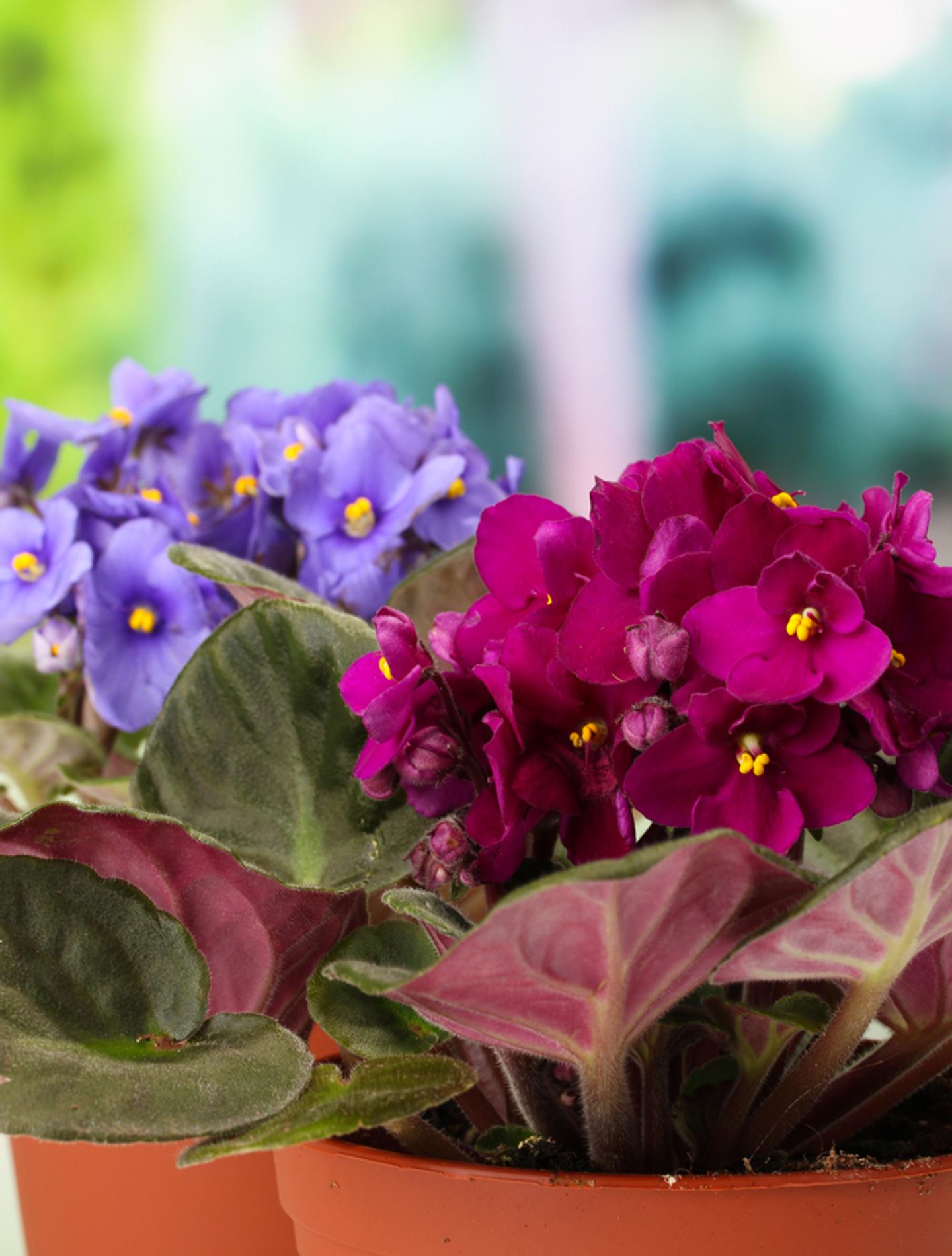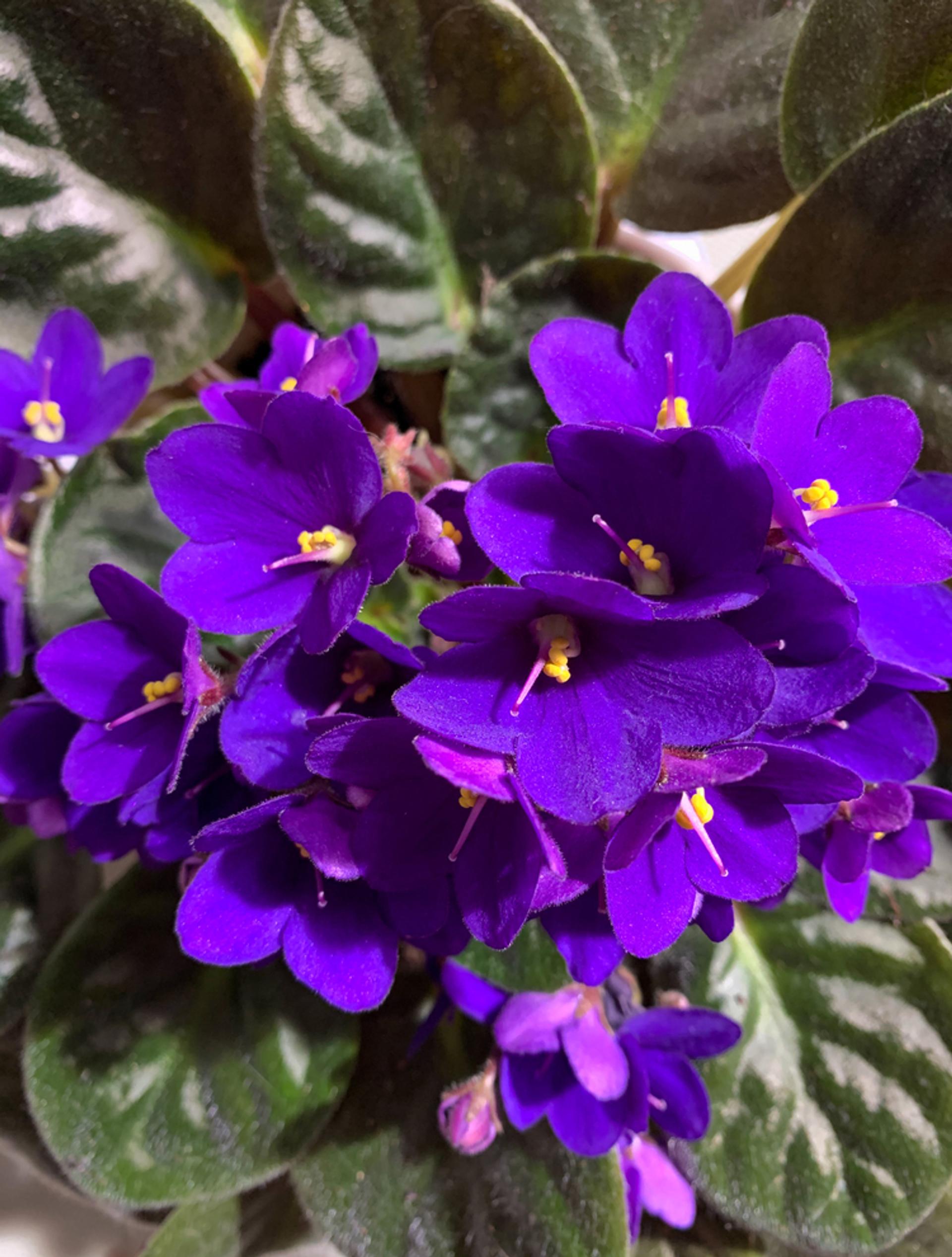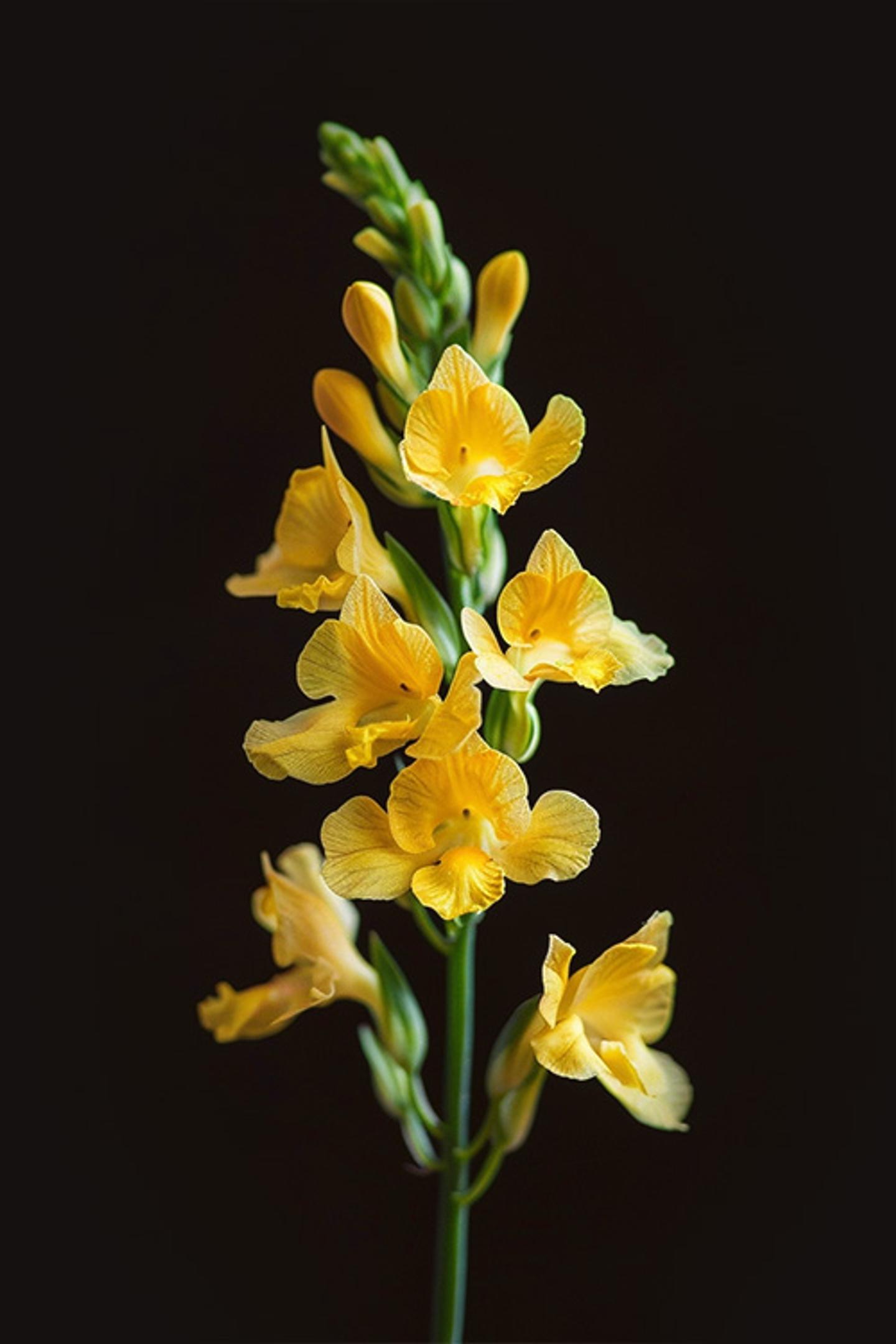Flower Meanings
Violet


The Meaning of the Violet
Violets: such joyous, light-hearted little blooms, are they not? We all know how sweet they appear, but what about their meaning, you might ask? Not to worry, these mini blooms have symbolism to spare.
Devotion: Beginning with a bit of Christian symbolism, Viola odorata translates to “Our Lady of Modesty,” which officially associates the violet with Mary’s humble nature and devotion in the Christian tradition.
Protection: As the story goes, the violet first blossomed when Gabriel told Mary of her Son, the Messiah’s, impending birth. The Angel Gabriel is then given the task of watching over and communicating with humankind, giving the violet the meaning of protection and connections.
Spirituality: Many sects of Christianity compare the violet directly to Christ’s ability to be an intermediary – i.e., one who strove to live in equal balance between the mundane and worldly and the spiritual and heavenly.
Love: The violet’s association with love can be derived from its lovely, romantic appearance, color, and soft, gentle fragrance. Violets have actually been a key ingredient in many perfumes throughout time for its apparent ability to attract romantic suitors with it’s delicate, airy scent.
Growth and Expansion: The color of the violet, which also fittingly happens to be violet, ties back to the Sahasrara, the C/crown chakra, whose energy focuses on matters of awareness. This particular chakra deals with ideals such as enlightenment, divinity, peace, and liberation from limitation. Pretty much, these violet-colored violet blooms should always remind us to embrace our own growth and expansion continuously, both in our internal and external lives. Many have found that meditation upon the violet flower and its violet hues can trigger these blissful elements.
Temperance and Mental Clarity: Similarly, in Native American cultures, violets are often symbolic of clarity within the self. There is a Haudenosaunee legend that claims that the violet is a child born from both earth and sky. Because of this, that child, otherwise known as the violet, is considered to be a balance of harmony and essentially the mediator between heaven and earth. Therefore, the violet is a symbol of those that are neither here nor there, but virtually…everywhere. The Haudenosaunee took this representation of the violet and applied its meaning as a sign and symbol of the rich and powerful spirit of opportunity. [1]

"Even if fall she must, it was to lie on the earth and moulder sweetly into the roots of violets."
Virginia Woolf
The History of the Violet
Violets, specifically African violets, were first documented in Tanzania (then German East Africa) in 1892 by Baron Adalbert Emil Walter Redcliffe Le Tanneux von Saint Paul-Illaire. Say that five times fast.
Baron was a German colonial official in the city of Tanga located on the East African coast, also one of the largest modern towns of Tanzania. He was also known to be quite the traveler, author, plant collector, plantation owner, and the imperial district governor/commissioner of Usambara – present-day North-East Tanzania. His first discovered bloom was the flowering Usambara violet in the wooded Usambara Mountains located southeast of Lake Victoria near Kenya’s border.
Baron collected seeds of this plant and sent them to his father, Baron Ulrich von Saint-Paul, in Fischbach, Silesia, Germany. His father, conveniently an amateur horticulturist, sowed the seeds his son sent his way and generated the very first African Violet flowering plant samples in Germany. These seeds and plant samples were then shared with Hermann Wendland, the Master Gardener of Herrenhaus Greenhouses. He was also the leading Botanist/Director of the Royal Botanical Gardens of Herrenhaus, Germany.
Hermann first described the African Violet plant characteristics in the leading European journal Gartenflora in 1893 as well as in the Mollers Deutsche Gartner-Zeitung, Erfurt, on May 20th, 1893.
African Violets Enter the US!
These blooms were first documented to have arrived in the US in 1894. They were introduced to the public by a New York florist! (Represent!)
Due to the colder east coast climate, they did not survive very long and earned a reputation of being difficult to grow. However, they became popular once again with the commercial availability of the fluorescent light bulbs in 1938. Under these (much) more favorable light conditions, African Violets were able to bloom with a wide variety of flower, foliage, and flower-type characteristics. In the succeeding years, the African Violet Society of America – AVSA – was formed in 1946. [2]
DID YOU KNOW - Violet Fun Fact
There are around 500-600 species of Violets in the genus. [3]

How to Grow Violets
The first step to growing your own violet plant is to choose a variety to plant! This can be quite a bit more difficult than one would imagine when faced with a vast variety of colors, sizes, and leaf forms. Most African violets naturally form a rosette of leaves around one centralized stem. Some more unusual varieties will develop multiple stems. Still, both grow in a range of sizes from minis that are less than 3 inches in diameter to plants that grow as large as a cutting board!
These blooms flower also vary quite widely, and come in colors such as white, pink, purple, blue, yellow, green, and gold! Their form will usually range from large, ruffled blooms to blooms on the flatter, singular size.
Once you’ve chosen your plant, it’s time to choose a planting site. Violets need bright light to grow up to be strong and successful, but they do not tolerate intense direct sunlight, as their leaves will scorch very easily. Your new blooms will flourish best at temperatures from 65 degrees to 75 degrees Fahrenheit.
If you’re planning on growing your violets in the winter, they’ll do best in a south, east, or west-facing window. However, on cold winter nights, be sure to move them away from the cool drafts of the window and relocate it to a spot that will remain above 55 degrees. Once the sun gets stronger in the springtime, move your plants to a cooler, east-facing window.
Pro Tip: Give you plants a ¼ turn clockwise every few days for even growth.
If you will be using grow lights to grow your new blooms, set the bumps about 12 to 15 inches above the tops of the plants, depending on the strength of the bulbs and the size of the plants. Set a timer for 14 hours of light and 10 hours of dark each day.
Pro Tip: Violets need at least 8 hours of darkness daily to produce flowers.
Water your blooms when the surface of the soil becomes dry using room temperature water, as cold water will shock the roots leading to leaf spots which no one wants! [4]
There is actually quite a big difference between the most fun we had while creating a design and the design we are most proud of. Even more so, that design differs between the two of us pretty drastically!
DID YOU KNOW - Violet Fun Fact
The violet is the birth flower for the month of February and the state flower of Illinois, New Jersey, Wisconsin, and Rhode Island!

How to Care for Violets
When it comes to caring for your new violet plant, you’re going to want to keep the soil lightly moist at all times and use room-temperature water when watering. The leaves of the violet are highly susceptible to rot if the plant is kept in high humidity, so water them from the bottom to avoid getting water on the leaves. Fertilize your plant every two weeks if possible, using a high phosphorus plant food. Only do so during the active growing season (spring and summer). Only fertilize when the plant starts to look like it needs a little bit of a boost. A common problem when caring for violets is over-fertilizing, so beware!
Many viola varieties tend to prefer warmer conditions, about 65 degrees Fahrenheit / 18 degrees Celsius or warmer. However, some varieties can tolerate cooler conditions. Be sure to keep your violet plant away from drafty windows in the winter!
If you begin to notice the leaves of your violet plant getting a bit thin, or sprouting dark green leaves and leggy stems, you’ll know that the plant is getting too little light. Light green or bleached leaves will indicate too much light.
As your plants grow, shift them to larger pots, but keep them slightly root-bound as this can encourage them to bloom. The best time for repotting is after some of the leaves have wilted. [5]
When to Send Violets as a Gift
As the birth flower for the month of February, violets are the perfect gift for all of the February babies in your life! Also consider giving violets to show thoughtfulness, subtlety, dignity, and grace. Or just to give someone an elegant surprise to brighten up their day!

References:
- 1 - What’s Your Sign
- 2 - Baby Violets
- 3 - Just Fun Facts
- 4 - Gardeners.com
- 5 - Almanac.com
Flower Meanings — keep discovering

Stock
Stock is not just your average beautiful bloom! They’re also known as one of the easiest plants to grow. Stock are festively fragrant, come in a variety of colors, and are named…stock…huh? Don’t worry we’ll get into how these stunning blooms got their name in just a bit…

Sunflower
What’s more joyful than a sunflower? Their huge, yellow-orange blooms tower over the garden, but they make up for stealing the show by providing seeds, feed, and pollen. Sun-seekers, summer lovers, and snowbirds who flock south at autumn’s first chill, this steadfast symbol of sun-worship is for you.

Texas Bluebonnet
Predominantly found in the southwestern parts of the United States, allow us to formally introduce you to the official state flower of Texas, the bluebonnet. Named after the bonnets worn by pioneer women to shield them from the sun, the bluebonnet epitomizes both beauty and poise.

Tulip
Tulips aren’t too elegant, too romantic, too big, too small, or too bright; tulips are always just right. Not to mention cozy, like snuggling up in your favorite blanket with a fire crackling and snow gently falling.

Stock
Stock is not just your average beautiful bloom! They’re also known as one of the easiest plants to grow. Stock are festively fragrant, come in a variety of colors, and are named…stock…huh? Don’t worry we’ll get into how these stunning blooms got their name in just a bit…

Sunflower
What’s more joyful than a sunflower? Their huge, yellow-orange blooms tower over the garden, but they make up for stealing the show by providing seeds, feed, and pollen. Sun-seekers, summer lovers, and snowbirds who flock south at autumn’s first chill, this steadfast symbol of sun-worship is for you.

Texas Bluebonnet
Predominantly found in the southwestern parts of the United States, allow us to formally introduce you to the official state flower of Texas, the bluebonnet. Named after the bonnets worn by pioneer women to shield them from the sun, the bluebonnet epitomizes both beauty and poise.

Tulip
Tulips aren’t too elegant, too romantic, too big, too small, or too bright; tulips are always just right. Not to mention cozy, like snuggling up in your favorite blanket with a fire crackling and snow gently falling.
Ready to send beautiful flowers?
Our guided experience helps you send a one-of-a-kind arrangement perfect for every occasion.
Send Flowers